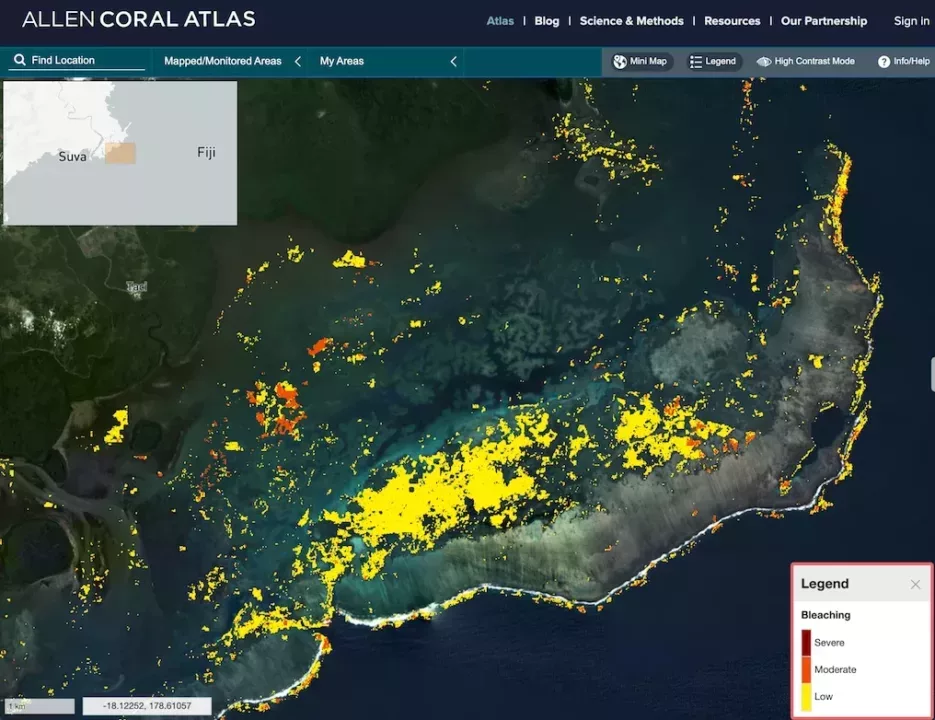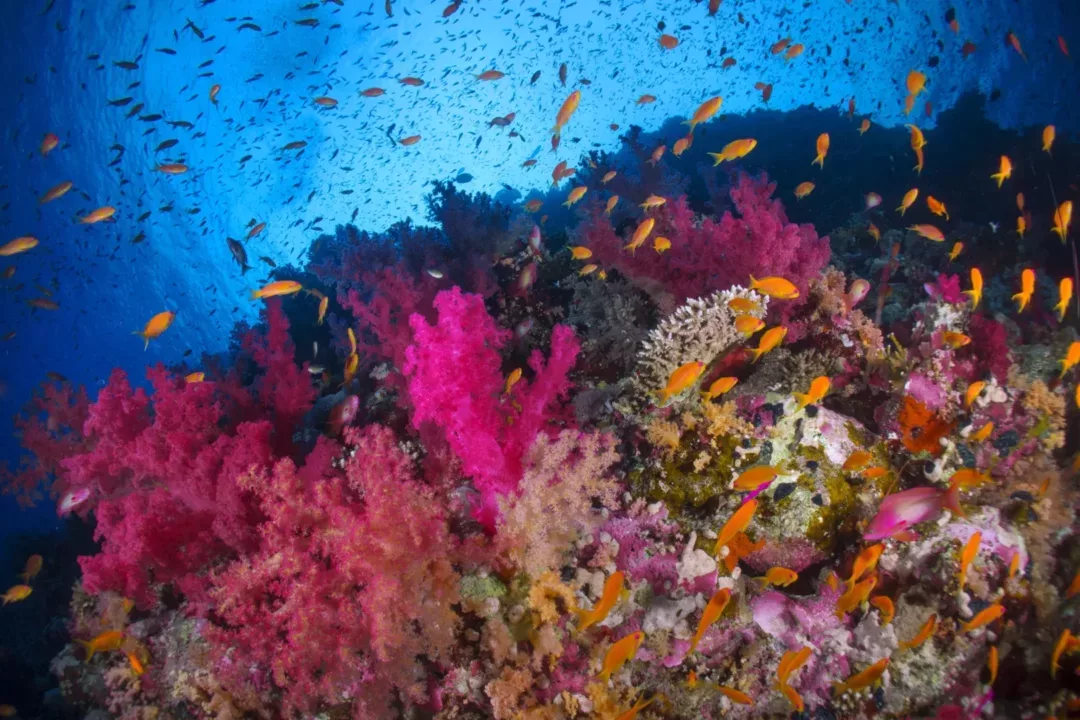Today the Allen Coral Atlas released a new version of its coral bleaching monitoring system, including biweekly bleaching data from 2019 to the present. This unprecedented data release helps resource managers react to bleaching events as they occur, and decision makers as they prioritize areas for restoration and mitigation.
“Coral bleaching is one of the most important threats to the world’s reefs. Yet coral bleaching has proven nearly impossible to monitor at a large geographic scale,” said Dr. Greg Asner, Center Director for the Center for Global Discovery and Conservation Science at Arizona State University (ASU) and Managing Director of the Allen Coral Atlas. “That’s why we continue to improve our global threats monitoring system, and with our new v2.0 system, we track this threat with improved accuracy and detail.”
This improved method was developed and implemented by the ASU team, who leads the Allen Coral Atlas program. In partnership with Coral Reef Alliance, the Atlas team has spent the past two years gaining feedback from local experts about coral bleaching events to compare with the method, for iteration and improvement. The team has partnered with best-in-class field data programs like Mermaid to utilize their database of coral reef bleaching survey data to do so.
The bleaching datasets are already being used by resource managers globally. “The GBRMPA (Great Barrier Reef Marine Park Authority) uses the bleaching monitoring system feature during the summer’s weekly Reef Health Update to inform the general public,” said Jessica Stella, Chief Scientist at the Great Barrier Reef Marine Park Authority. “The information is then used by the Reef Authority in targeting specific areas on the Reef for targeted in-water site inspections.”
See the current bleaching event affecting Fiji here, and other large-scale bleaching events from around the world.


